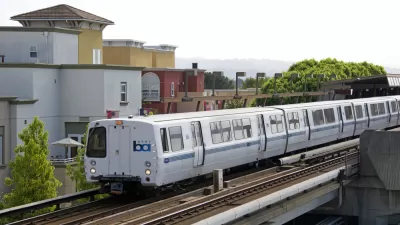Updating the initial "Re-Emergence of Concentrated Poverty" Brookings report, Elizabeth Kneebone shows where concentrations of poverty have taken root during the Great Recession and subsequently slow recovery period.
Using American Community Survey data for 2008-2012, Elizabeth Kneebone explores how the latest American economic activity has affected the "changing incidence of both distressed neighborhoods, in which at least 40 percent of residents live below poverty, and high-poverty neighborhoods, where at least 20 percent of residents are poor." The report illustrates where concentrated disadvantage has evolved since 2000 throughout 100 of the largest metro areas in the United States, along city and suburban lines.
As stated in the report brief, "after two downturns and subsequent recoveries that failed to reach down the economic ladder, the number of people living below the federal poverty line ($23,492 for a family of four in 2012) remains stubbornly stuck at record levels." Kneebone found that more residents under the federal poverty live are located in suburbs rather than big cities, or rural communities. Indeed, this demonstrates a "significant shift compared to 2000, when the urban poor still outnumbered suburban residents living in poverty."
Moreover, Kneebone finds that this poverty has not spread, but rather "become more clustered and concentrated in distressed and high-poverty neighborhoods, eroding the brief progress made against concentrated poverty during the late 1990s."
FULL STORY: The Growth and Spread of Concentrated Poverty, 2000 to 2008-2012

Study: Maui’s Plan to Convert Vacation Rentals to Long-Term Housing Could Cause Nearly $1 Billion Economic Loss
The plan would reduce visitor accommodation by 25,% resulting in 1,900 jobs lost.

North Texas Transit Leaders Tout Benefits of TOD for Growing Region
At a summit focused on transit-oriented development, policymakers discussed how North Texas’ expanded light rail system can serve as a tool for economic growth.

Why Should We Subsidize Public Transportation?
Many public transit agencies face financial stress due to rising costs, declining fare revenue, and declining subsidies. Transit advocates must provide a strong business case for increasing public transit funding.

How Community Science Connects People, Parks, and Biodiversity
Community science engages people of all backgrounds in documenting local biodiversity, strengthening connections to nature, and contributing to global efforts like the City Nature Challenge to build a more inclusive and resilient future.

Alabama: Trump Terminates Settlements for Black Communities Harmed By Raw Sewage
Trump deemed the landmark civil rights agreement “illegal DEI and environmental justice policy.”

Dear Tesla Driver: “It’s not You, It’s Him.”
Amidst a booming bumper sticker industry, one writer offers solace to those asking, “Does this car make me look fascist?”
Urban Design for Planners 1: Software Tools
This six-course series explores essential urban design concepts using open source software and equips planners with the tools they need to participate fully in the urban design process.
Planning for Universal Design
Learn the tools for implementing Universal Design in planning regulations.
City of Santa Clarita
Ascent Environmental
Institute for Housing and Urban Development Studies (IHS)
City of Grandview
Harvard GSD Executive Education
Toledo-Lucas County Plan Commissions
Salt Lake City
NYU Wagner Graduate School of Public Service




























